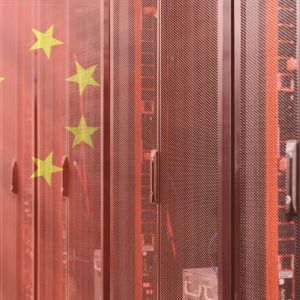China has started implementing an experiment which involves placing data centers in the oceans in a bid to cut the amount of energy used to cool down artificial intelligence servers. AI servers are known for their huge energy consumption as demand for the technology keeps growing across the globe. With the growing demand also comes an appetite for vast cooling systems, forcing tech firms and governments to think outside the box for solutions. China tests cooling by the current Engineers in Shanghai have been tied up preparing the yellow capsule that will be sent underwater in an attempt to use the ocean to cut the power consumed by server farms housing AI servers. Yang Ye the Vice President and Secretary of Beijing Highlander Digital Technology said the company is working with the government on this venture. “The company is working alongside state construction groups to sink the structure later this month, and underwater operations have inherent advantages,” said Yang. Data centrer underpin almost every aspect of the online world, from social media to finance. However, as AI use spreads, the energy demands have risen sharply. Cooling alone accounts for a large portion of electricity bills. Through using seawater rather than air conditioning or evaporative systems, Highlander claims that energy consumption for cooling could be reduced by as much as 90%. That makes the Shanghai project one of the world’s first commercial attempts to deliver underwater cloud services. Microsoft tested a similar approach in Scotland seven years ago but chose not to commercialize it, despite calling the trial a success when it ended in 2020. The Shanghai pod has signed up clients including China Telecom and a state-owned AI computing firm. Government backing is evident as Highlander secured a 40 million yuan subsidy for an earlier pilot in Hainan province in 2022. That facility is still operating. “The actual completion of the underwater data centre involved greater construction challenges than initially expected,” admitted Zhou Jun, an engineer on the Shanghai project. The pod has been designed with renewable energy in mind. It will draw power from nearby offshore wind farms, with Highlander saying more than 95% of the electricity will come from green sources. Protecting the servers inside is another hurdle, since salt water corrodes metal quickly, so the capsule is coated in a glass-flake material to keep the contents dry. To allow for maintenance, a lift will link the submerged section to a small structure above the surface. Experts pose questions about thermal pollution Despite the bold claims, experts warn that the obstacles are significant, as laying internet connections to an offshore site is more complicated than linking land-based facilities. The US-based academic Shaolei Ren described the present focus as proving technological feasibility rather than building at scale. Security poses another problem, as research from American and Japanese universities suggests underwater data centers could be vulnerable to sabotage using sound waves transmitted through the sea. Then there is the question of marine life, as Andrew Want, a marine ecologist at the University of Hull, said little research had been done on how heat released by servers might affect ecosystems. “These are unknowns at this point,” he noted. Some species could be attracted to the warmer water, while others might move away. Highlander insists the risk is low and a study of its earlier test in Zhuhai reported that water temperatures stayed comfortably within safe limits. But Ren warned that larger facilities would inevitably release more heat. “For megawatt-scale data centers underwater, the thermal pollution problem needs to be studied more carefully.” Ren. For now, industry specialists see these pods as potential partners rather than replacements for conventional server farms. “They’re probably not going to replace existing traditional data centers, but can provide service to some niche segments,” Ren added. China’s effort comes as Beijing renews its pledge to cut national emissions as energy demand for data centers grows. In the US alone, an extra $7.3 billion is added to the electricity costs driven by data center energy demand, as recently reported by Cryptopolitan . Get seen where it counts. Advertise in Cryptopolitan Research and reach crypto’s sharpest investors and builders.















